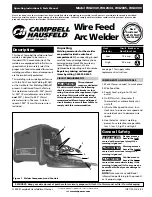
7
If desired, you may mount the
PT800 towers in the corners of
the room using the optional
PCM800 corner-mount bracket.
PCM800 corner-mounting kits
are available separately from
your JBL dealer.
NOTICE: Important Safety Notes
• P
roper selection of mounting
hardware and installation of the
wall and/or corner brackets are
the responsibility of the
customer.
• This product is not intended
for ceiling mounting.
Six Number 10 round head or
pan head screws should be
used per loudspeaker. The
screw head should be between
3/8 inch and 13/32 inch in
diameter, and the screw should
be at least 2 inches in length.
When installing screws through
drywall, always use properly
selected wall anchors.
Attach two pieces of the four
self-adhesive rubber pads that
came with the PT800 to the
angled surfaces of the
enclosure near the bottom to
prevent the speaker from
rattling against the wall and to
allow a firm fit.
Select a suitable mounting
location in a wall corner.
(The ceiling is not a suitable
mounting location.)
Hold the wall bracket against
the wall with the U-shaped
cutouts at the top. Make sure
that it’s level and 3/4 inch below
where you want to have the
top of your PT800 enclosure
positioned. Mark the center of
each of the six mounting holes
using a pencil or sharp
implement. Remove the bracket
and drill six pilot holes as
required for your wood screws
or anchors. Securely fasten the
bracket to the wall. You have
access to the wall screws via
the six large holes on the front
face of the bracket.
Loosen, but do not remove, the
two hex bolts on the back of the
PT800 speaker cabinet. Back
the screws out until the head is
about 1/4 inch from the
enclosure. Install the loud-
speaker by slowly lowering the
cabinet towards the U-shaped
cutouts at the front top surface
of the PCM800 bracket so that
the hex bolt shafts rest in the
cutouts. Check that the speaker
is level, then tighten the hex
bolts. Check that the loud-
speaker is firmly locked onto all
screws by gently pulling the
speaker down and forward.
Corner-Mounting the PT800 Tower
Install the two screws into
either a wooden wall-stud or
anchor, and tighten them until
the back of each screwhead is
about 1/8 inch from the wall.
Install the loudspeaker by
slowly moving the cabinet
toward the screws so that the
screwheads clear the larger
circular portion of the top two
keyholes of the two brackets.
Once both screwheads have
entered the keyholes, the
loudspeaker should gently be
lowered onto the screw shafts.
Check that the loudspeaker is
firmly locked onto the screws
by gently pulling the speaker
down and forward.
Wall Mounting (Continued)
Summary of Contents for Performance Series PT800
Page 20: ...19 Staple sales invoice here...






































